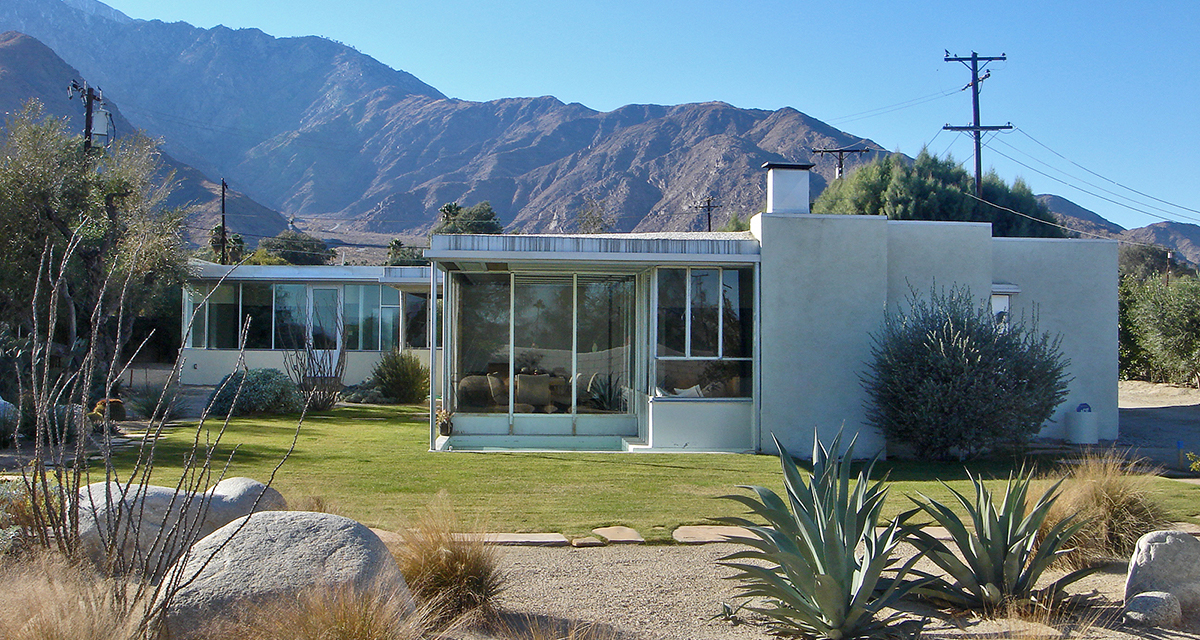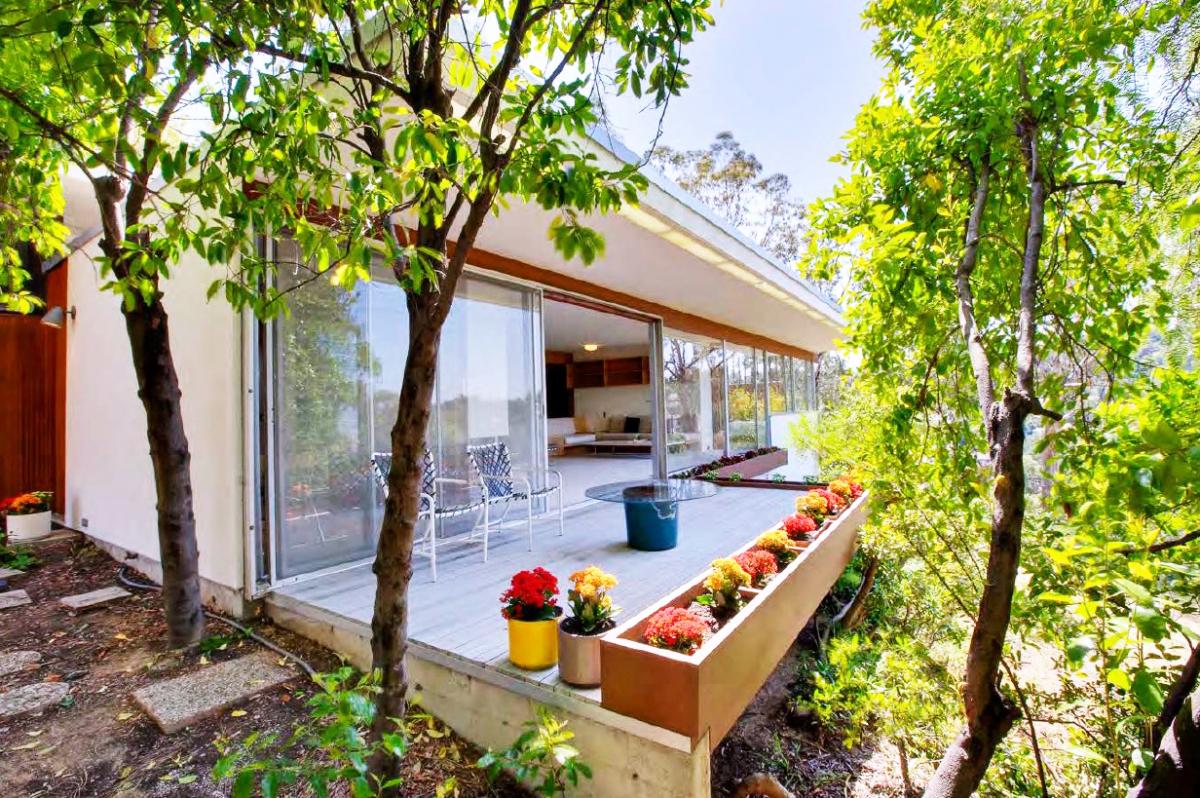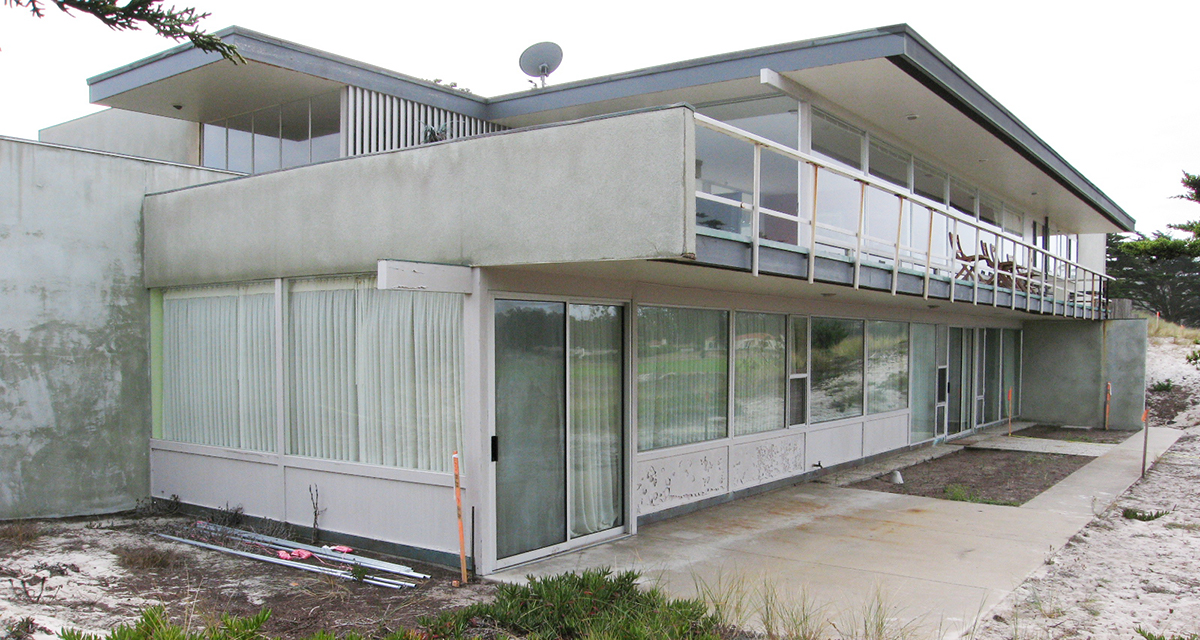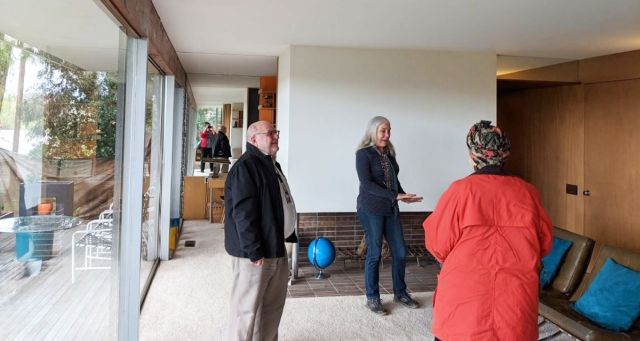
Homes by Neutra Win Historic Status
 |
Most any architectural writer wishes, just now and again, to freeze a home in time. After all, if a home is beautiful, really special, why change a thing?
And if the people who grew up in the home, or raised their family or simply lived there, really loved their experiences there, why not preserve those too – to the extent that experiences can be preserved?
That’s one reason the Kuhns house, designed by Richard Neutra and built in 1964, is so special. Not only is this compact, little house essentially intact – when upholstery was replaced, the same fabric was used – but recordings exist of conversations between the original owners and the architect and his wife, Dione, who’d became great friends.
And all of this is brought out in documents written by Neutra scholar Barbara Lamprecht that are written in a just-the-facts style as is requisite, but still make clear just how much Lamprecht adores every inch of the house, a feeling she shares with its current owners, Scott Moody and Laura Kuhns Moody.
 |
On September 16 the Kuhns house was declared a Los Angeles Historical Cultural Monument by the City Council, making it one of two homes designed by Neutra (1892-1970) to achieve historic status lately. The other is the Grace Miller house, a compact landmark in Palm Springs.
The state Historic Preservation Commission approved the Miller house listing on the State Historic Resources list and on the National Register of Historic Places. Dion Neutra, Richard’s son and architectural partner who for decades fought to preserve his father’s legacy, would have been pleased at both developments. He passed away in November at age 93.
Under Los Angeles law, work done on historic cultural monuments must meet federal standards for historic properties. The Kuhns home is at 4359 North Camello Road in Woodland Hills. The city's Cultural Heritage Commision had recommended council approval.
Neutra, one of the founders of the Modern Movement, got his start in Austria but developed his career in Southern California. Yet, storied as the architect is, and as admired as are his designs, many continue to face threats.
 |
On the Monterey Peninsula preservationists, including Richard’s son Raymond, who lives in ther area, have fought for years to save the wonderful Connell house in Pebble Beach. Its owner, who wishes to replace it with a larger home, has encouraged its deterioration.
For a cheerier tale, consider that in Orinda, the four bedroom, wood-walled Nelson house from 1951 was declared a landmark in the suburban Bay Area town of Orinda in mid-2019.
And in Los Angeles, consult the documentation produced by Lamprecht, author of ‘Neutra: Complete Works,’ for the Kuhns house designation.
The small house was designed largely by two younger men in the Neutra office, Benno Fischer and John Blanton. It was for a young couple who both knew about Neutra. The husband, John Lary Kuhns, had played as a boy at Neutra’s famed Lovell Health House. John's wife, Pauline Kuhns, attended a school designed by the architect.
The house remains in the family.
 |
Lamprecht starts her description of the house at its entry. “Deceptively typical, the entry area is actually a dense and complex display of strategies exemplifying attention to ergonomics and physical needs on behalf of function,” she writes
“Neutra, known for making good design available to people of modest means, distinguished himself from his Modernist peers by integrating nature into his designs. These strategies, based on his principles of ‘biorealism,’ included continuity of materials inside and out, graduated transitions between public and private spaces, and calibrated axes for views to the landscape,” she writes.
She focuses also on the story of the house and the life lived within. “The meticulous recording of every aspect of the purchase, design, construction, and life of the home and its landscape permits a deeper recognition of these tenets as rendered on behalf of a middle-class, postwar family, a couple with a boy and a girl, who were both typical and yet unique, universal but individual, as Neutra often wrote about human beings," she writes.
Lamprecht also has her eye on a very important early Neutra work, the Jardinette Apartments in Los Angeles. Although not in immediate danger, the building is no longer in use, its future uncertain.
“Until 2017, it was in continued use as affordable housing since it opened in 1929,” she writes. “How many buildings can ‘say’ that?”
She wants the word to get out to attract “a developer experienced in historic preservation” to step in and develop a residential scheme that could benefit from historic tax credits – and provide a benefit to society.
- ‹ previous
- 311 of 677
- next ›



